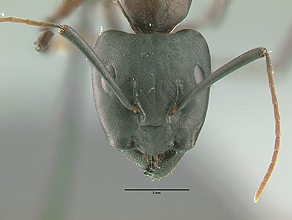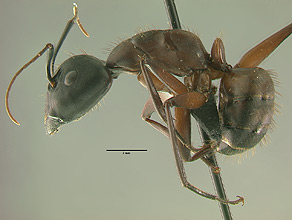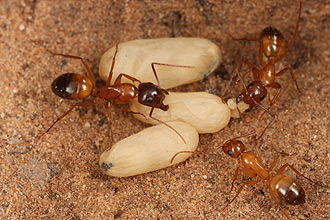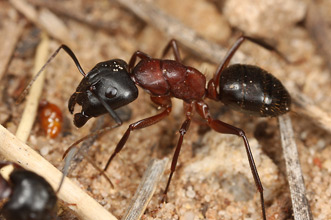- Identification
- Camponotus vicinus majors have few erect hairs on the cheeks, malar area and sides of the head. Their scapes are nearly always flattened at the base. The scape surpasses the posterior lateral corner of the head by an amount that is greater than the length of the first funicular segment. The later separates this ant from the only other Camponotus in the Reservation that nests under rocks in open areas, Camponotus sansabeanus. The color and the number of erect hairs on the mesosoma and gaster vary widely across the species' range.
- Biology
- Camponotus vicinus is found across a wide range of habitat types but exhibits an affinity for sandy to rocky soils. The places it occurs are typically hot and dry habitats (e.g. sagebrush, pinyon juniper and Ponderosa pine woodland) with their nests being located in slightly moister microsites. These ants may be present in open forests but they are not generally found in dense woodlands. In the northern reaches of its range it tends to occur at higher elevations.
- The workers are polymorphic and there is a caste of large soldiers.
- additional biology notes...
- Distribution
- Range
- Canada, United States, Mexico. British Columbia, Alberta, Manitoba, Montana and North Dakota southward into the central highlands of Mexico.
- Navajo Reservation Records
- Specimens being processed.
- Additional Notes
- Camponotus vicinus typically form chambers under rocks, with colonies utilizing a series of stones that are connected by underground tunnels. They may occasionally be found nesting under other ground cover objects, such as downed wood, or using an existing preformed, protected cavity as a nesting chamber. Foraging often takes place at night, although diurnal foraging has been observed, and occurs on the ground and on vegetation. Workers will tend Homoptera.
- Early Colony Growth
- Mating flights take place in mid to late spring. Laboratory cultures of nascent queens from Washington state (Hansen and Akre 1985) showed that queens produced an initial pulse of eggs shortly after their mating flight. Larvae development averaged five weeks, pupae seven weeks and workers first emerged after 11 weeks. The average number of workers produced in the first year was four. A second pulse of egg laying occurred in the middle of the summer, with some development of these individuals occurring over the summer. This was followed by a larval developmental dormancy and egg laying diapause. This quiescence is then broken in January/February of the following year.
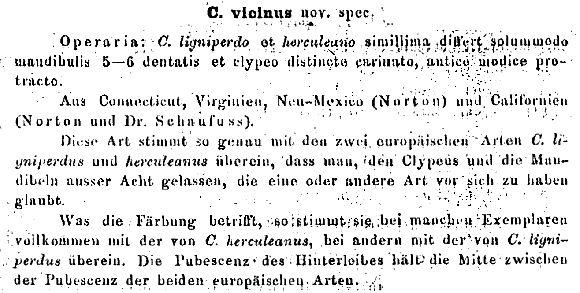
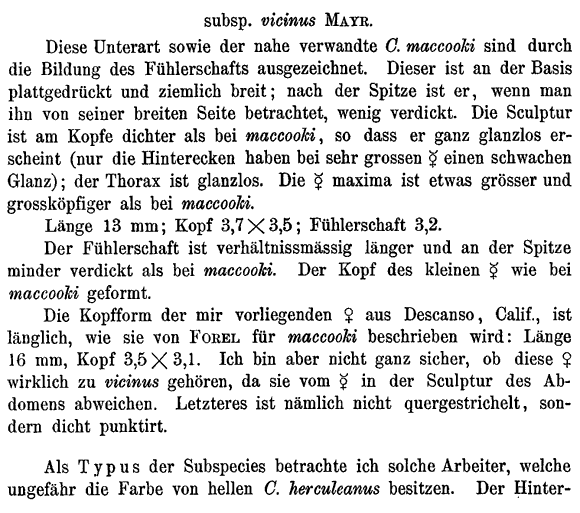

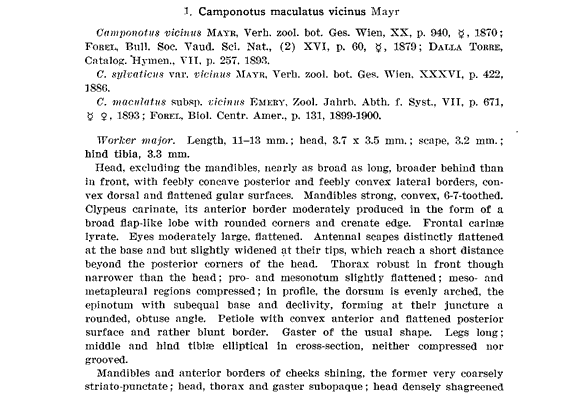
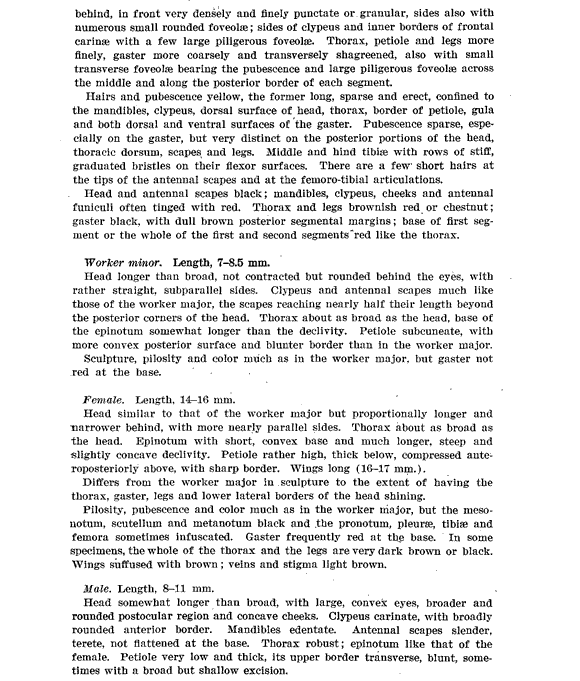

- Literature
- Creighton, W. S. 1950. The ants of North America. Bulletin of the Museum of Comparative Zoology at Harvard University. 104:1-585.
- Emery, C. 1893. Beiträge zur Kenntniss der nordamerikanischen Ameisenfauna. Zoologische Jahrbücher, Abteilung für Systematik, Geographie und Biologie der Tiere. 7:633-682.
- Hansen, L. D. and R. D. Akre. 1985. Biology of carpenter ants in Washington State (Hymenoptera: Formicidae: Camponotus). Melanderia. 43:1-62.
- Mackay, W. P. and E. Mackay. 2002. The ants of New Mexico (Hymenoptera: Formicidae). Edwin Mellen Press, Lewiston, NY.
- Mayr, G. 1870. Neue Formiciden. Verhandlungen der Kaiserlich-Königlichen Zoologisch-Botanischen Gesellschaft in Wien. 20:939-996.
- Wheeler, W. M. 1910. The North American ants of the genus Camponotus Mayr. Annals of the New York Academy of Sciences. 20:295-354.
- A note about these publications. The literature cited here is not meant to be an exhaustive list of papers published about this species.
Page authored by David Lubertazzi and Gary Alpert
